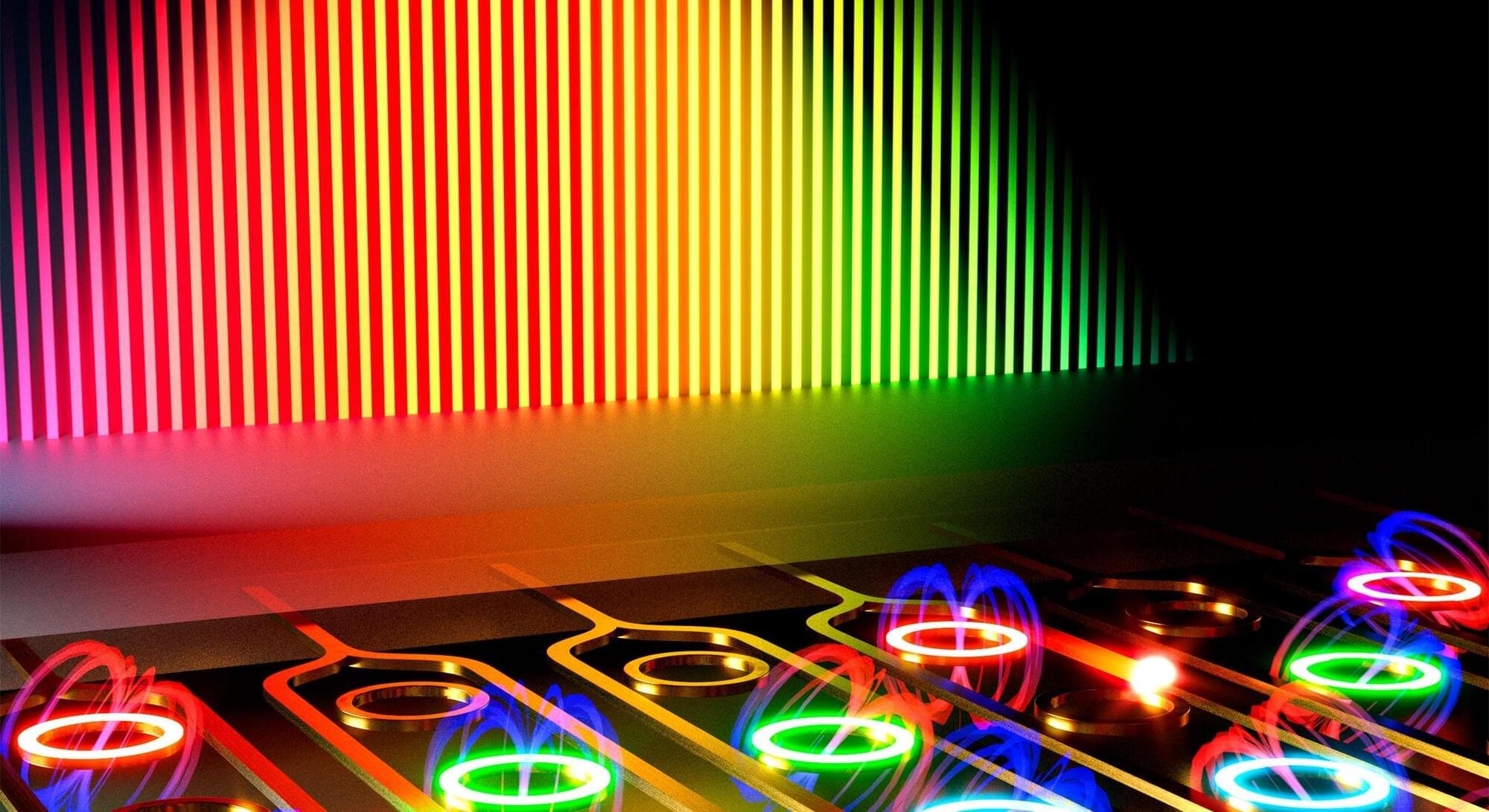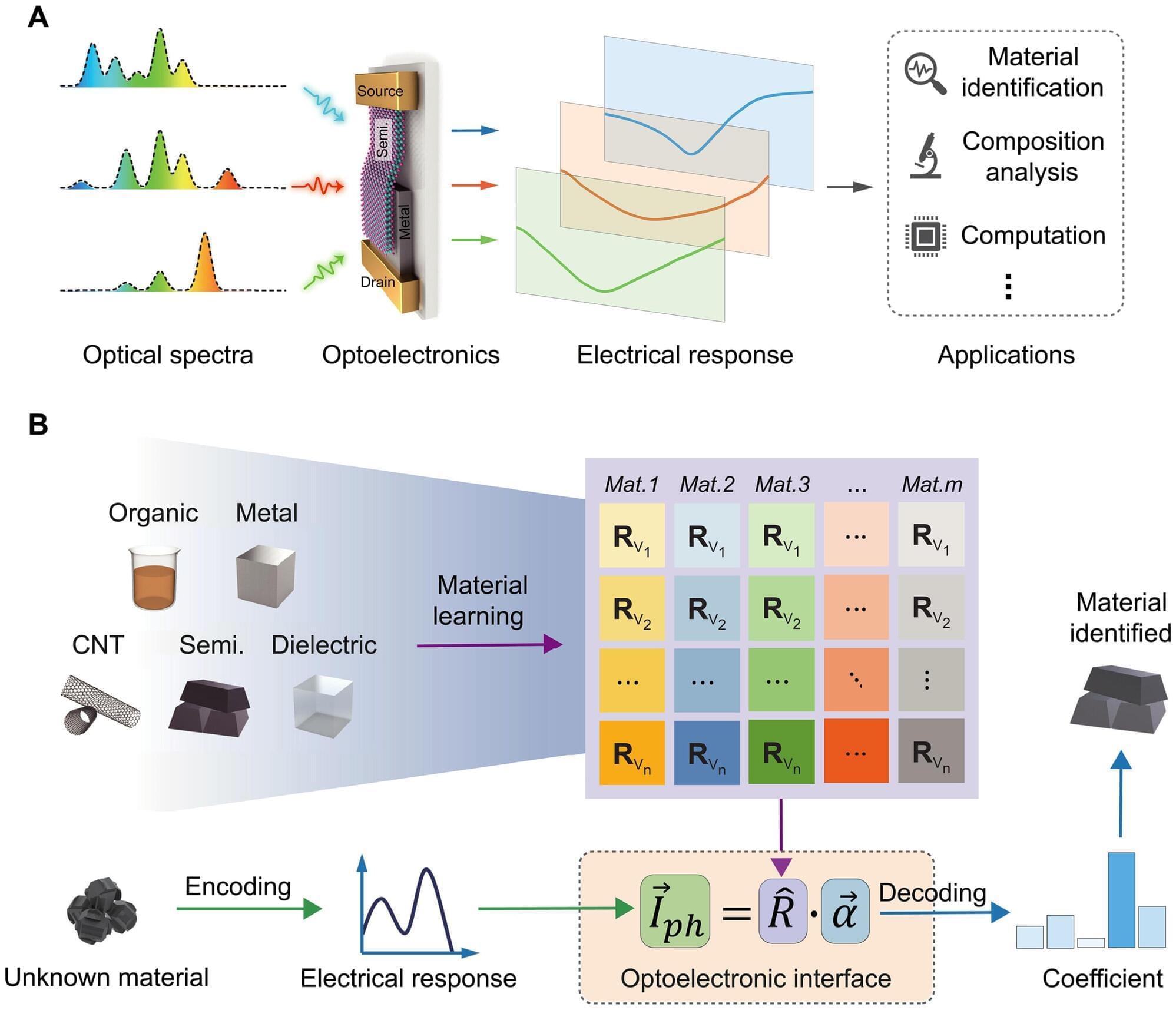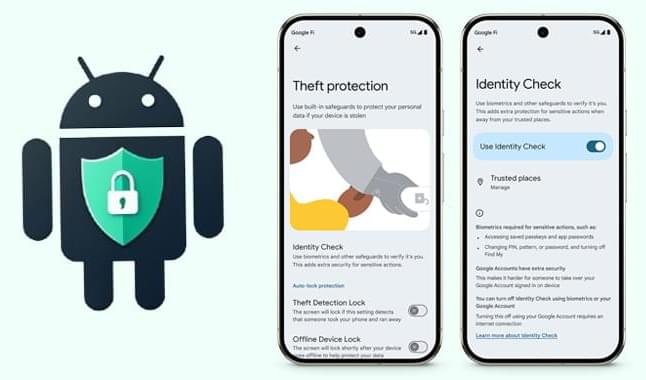Can your smartphone do that?



For decades there has been near constant progress in reducing the size, and increasing the performance, of the circuits that power computers and smartphones. But Moore’s Law is ending as physical limitations – such as the number of transistors that can fit on a chip and the heat that results from packing them ever more densely – are slowing the rate of performance increases. Computing capacity is gradually plateauing, even as artificial intelligence, machine learning and other data-intensive applications demand ever greater computational power.
Novel technologies are needed to address this challenge. A potential solution comes from photonics, which offers lower energy consumption and reduced latency than electronics.
One of the most promising approaches is in-memory computing, which requires the use of photonic memories. Passing light signals through these memories makes it possible to perform operations nearly instantaneously. But solutions proposed for creating such memories have faced challenges such as low switching speeds and limited programmability.

Tags; #science #neuroscience #happiness #happiness #neurodegenerativediseases #disease #health #mentalhealth #sleep #neuroscientist #disease #education #success.
******************
About me:
I am Shambhu Yadav, Ph.D., a research scientist at Harvard Medical School (Boston, MA, USA). I also work (for fun) as a Science Journalist, editor, and presenter on a YouTube channel. Science Communication is my passion.
***********************************************************
Disclaimer 1: The video content is for educational and informational purposes only, not a substitute for professional medical advice, diagnosis, or treatment. Always consult your physician or qualified healthcare provider regarding any medical condition. Do not disregard or delay seeking professional medical advice based on information from this video. Any reliance on the information provided is at your own risk.
Disclaimer 2: The Diary Of A Scientist (DOAS) channel does not promote or encourage any unusual activities, and all content provided by this channel is meant for EDUCATIONAL purposes only.
*Credits and thanks**
The video was recorded using iPhone and edited using Adobe Premiere Pro: a timeline-based and non-linear video editing software.
Music source: Epidemic sound.

Imagine smartphones that can diagnose diseases, detect counterfeit drugs or warn of spoiled food. Spectral sensing is a powerful technique that identifies materials by analyzing how they interact with light, revealing details far beyond what the human eye can see.
Traditionally, this technology required bulky, expensive systems confined to laboratories and industrial applications. But what if this capability could be miniaturized to fit inside a smartphone or wearable device?
Researchers at Aalto University in Finland have combined miniaturized hardware and intelligent algorithms to create a powerful tool that is compact, cost-effective, and capable of solving real-world problems in areas such as health care, food safety and autonomous driving. The research is published in the journal Science Advances.

A research team at POSTECH has developed a novel multidimensional sampling theory to overcome the limitations of flat optics. Their study not only identifies the constraints of conventional sampling theories in metasurface design but also presents an innovative anti-aliasing strategy that significantly enhances optical performance. Their findings were published in Nature Communications.
Flat optics is a cutting-edge technology that manipulates light at the nanoscale by patterning ultra-thin surfaces with nanostructures. Unlike traditional optical systems that rely on bulky lenses and mirrors, flat optics enables ultra-compact, high-performance optical devices. This innovation is particularly crucial in miniaturizing smartphone cameras (reducing the “camera bump”) and advancing AR/VR technologies.
Metasurfaces, one of the most promising applications of flat optics, rely on hundreds of millions of nanostructures to precisely sample and control the phase distribution of light. Sampling, in this context, refers to the process of converting analog optical signals into discrete data points—similar to how the human brain processes visual information by rapidly capturing multiple images per second to create continuous motion perception.


Scientists have successfully achieved a quantum collective behavior of macroscopic mechanical oscillators, unlocking new possibilities in quantum technology.
Quantum technologies are radically transforming our understanding of the universe. One emerging technology are macroscopic mechanical oscillators, devices that are vital in quartz watches, mobile phones, and lasers used in telecommunications. In the quantum realm, macroscopic oscillators could enable ultra-sensitive sensors and components for quantum computing, opening new possibilities for innovation in various industries.
Controlling mechanical oscillators at the quantum level is essential for developing future technologies in quantum computing and ultra-precise sensing. But controlling them collectively is challenging, as it requires near-perfect units, i.e. identical.

In today’s AI news, Mark Zuckerberg announced a huge leap in Meta Platforms’s capital spending this year to between $60 billion to $65 billion, an increase driven by artificial intelligence and a massive new data center.
Zuckerberg plans to increase the company’s capital expenditures by as much as roughly 70% over 2024.
In other advancements, Hugging Face has achieved a remarkable breakthrough in AI, introducing vision-language models that run on devices as small as smartphones while outperforming their predecessors that require massive data centers. The company’s new SmolVLM-256M model, requiring less than one gigabyte of GPU memory, surpasses the performance of its Idefics 80B model from just 17 months ago — a system 300 times larger.
And, Anthropic has launched a new feature for its “Claude” family of AI models, one that enables the models to cite and link back to sources when answering questions about uploaded documents. The new feature, appropriately dubbed “Citations,” is now available for developers through Anthropic’s API.
Meanwhile, can AI agents reliably click on all images showing motorcycles or traffic lights for us? It might be too early to tell, considering that a robot will essentially have to tell a website that it is not a robot. However, it looks like at least one of OpenAI’s Operator users was able to have the AI agent beat CAPTCHAs for him.
S strategic radar. Disruptions aren Then, In this special episode of Lightcone, the Y Combinator hosts are joined by YC partner and creator of Gmail Paul Buchheit to dig into some of the latest trends in the world of AI startups. They recorded their conversation at a recent retreat where 300 of the top AI founders in the world gathered to share expertise and make predictions about how this technology will shape our future.
And, What new kinds of jobs will AI bring that we never could have imagined before? In this special two-part episode, Reid Hoffman and Aria Finger explore this question and more with Sierra co-founder and OpenAI chairperson Bret Taylor.
